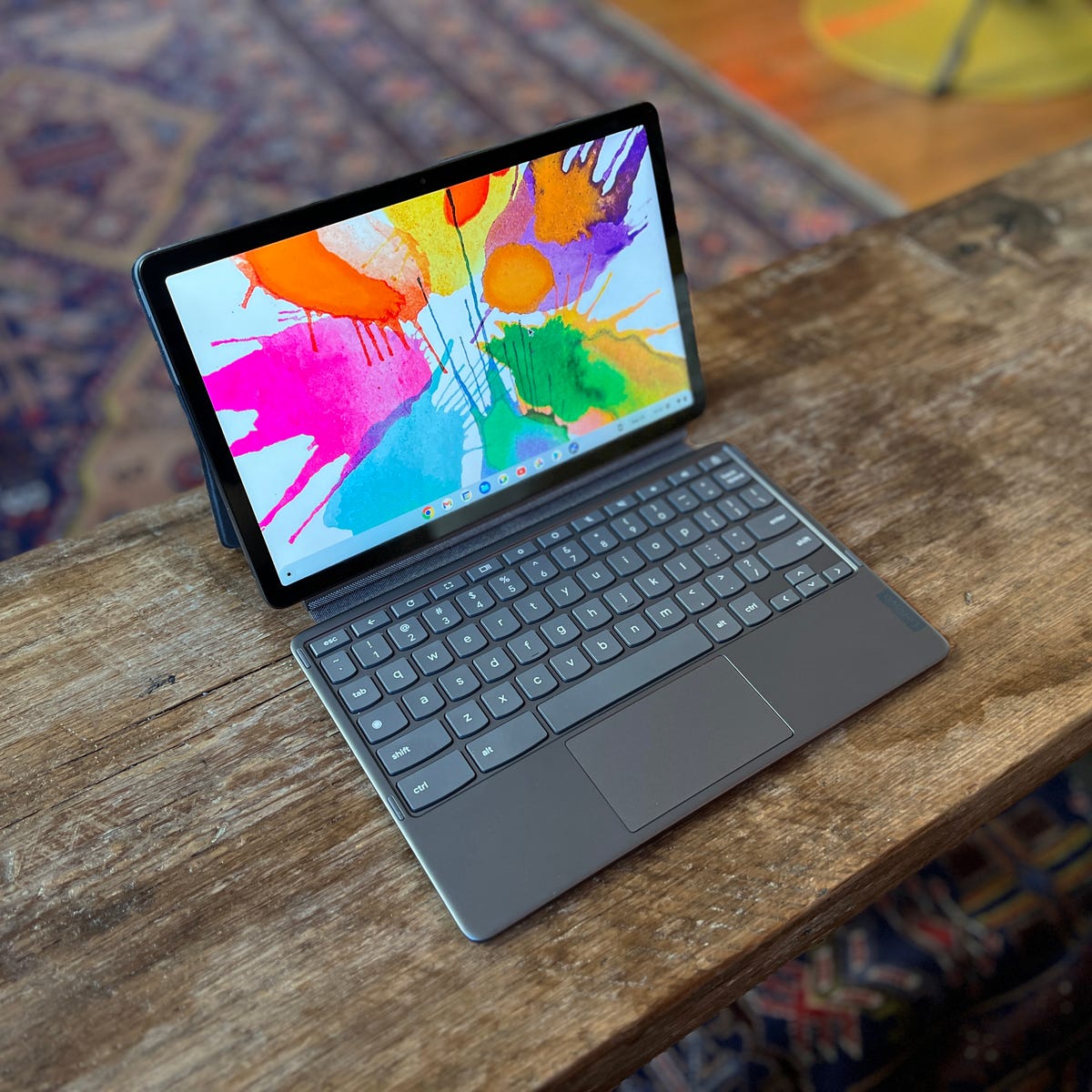1. Samsung Galaxy Chromebook 2
Display: 13.3-inch Full HD (1920 x 1080) QLED touchscreen display
Processor: Intel Celeron 5205U
Memory: 4GB / 8GB LPDDR5
Storage: 64GB eMMC / 128GB NVMe SSD
Operating System: Chrome OS
Battery:45.5Wh battery Up to 9 hours of battery life
Weight:2.71 lbs
2. Lenovo Duet 3
Display:10.1-inch Full HD (1920 x 1200) IPS touchscreen display
Processor: MediaTek Helio P60T Octa-Core processor
Memory:4GB / 8GB LPDDR4X
Storage:64GB / 128GB eMCP
Operating System: Chrome OS
Battery:7180mAh battery with up to 10 hours of battery life
Weight: 0.99 lbs (detachable keyboard included)
Other features: Stylus support (sold separately)
Detachable keyboard
2 x USB-C ports
2 x speakers with Dolby Atmos technology.
3. Microsoft Surface Go
Display: 10.5-inch PixelSense Display with a resolution of 1800 x 1200 pixels
Processor: Intel Pentium Gold Processor 4425Y
Memory: 4GB / 8GB RAM
Storage: 64GB eMMC / 128GB / 256GB SSD
Operating System: Windows 10 Home in S Mode
Battery: Up to 10 hours of battery life
Weight:1.2 lbs (not including Type Cover)
Other features: 8MP rear-facing autofocus camera
5MP front-facing camera
Surface Connect for charging and docking
TPM security chip for enterprise security.
4. Lenovo Chromebook Duet
Display: 10.1 inches, 1920 x 1200 pixels resolution, IPS touchscreen
Processor: MediaTek Helio P60T Octa-Core
RAM: 4GB/8GB LPDDR4x
Storage: 64GB/128GB eMMC
Battery life: Up to 10 hours
Operating System: Chrome OS
Weight: 2.03 lbs (921 g)
Connectivity: Wi-Fi 5 (802.11ac), Bluetooth 5.0
Ports: 1 x USB Type-C, headphone/microphone jack
Sensors: Accelerometer, Ambient light sensor, Hall sensor
Colors: Ice Blue/Iron Grey
Camera: 2 MP front-facing, 8 MP rear-facing
Audio: Stereo speakers, 2 x 1.5W
Dimensions: 242 x 159.8 x 7.35 mm.
5. Acer Chromebook Spin 311
Processor: Intel Celeron N4020 dual-core processor
Display: 11.6" HD (1366 x 768) touchscreen display
Memory: 4GB LPDDR4 RAM
Storage: 32GB eMMC
Graphics: Intel UHD Graphics 600
Battery life: Up to 10 hours
Operating System: Chrome OS
Connectivity: Wi-Fi 5 (802.11ac) and Bluetooth 5.0
Ports: 2x USB-C 3.1 Gen 1, microSD card reader, headphone/microphone combo jack
Dimensions: 11.50 x 8.03 x 0.67 inches
Weight: 2.62 lbs.
How to choose the best laptop for you
1. Purpose: What will you be using the laptop for? Gaming, graphic design, casual use, etc.
2. Performance: Check the specs, such as processor, RAM, storage, and graphics card, to ensure the laptop can handle your tasks efficiently.
3. Display: Consider the screen size and resolution, and whether a touchscreen is important to you.
4. Battery life: If you need a laptop for on-the-go use, consider a model with a longer battery life.
5. Portability: Think about how much you'll be carrying the laptop and choose a size and weight that works for you.
6. Price: Determine a budget and look for laptops that meet your needs within that budget.
7. Brand: Consider the reputation of the brand and read reviews from trusted sources to get a sense of the build quality and customer support.
8. Additional features: Consider if you need a backlit keyboard, a dedicated GPU, a specific operating system, etc.
How to Test Laptop
2. Battery Life Testing: Laptops are tested for battery life under normal use, such as web browsing and video playback. This gives an indication of how long the laptop can be used without being plugged in.
3. Display Testing: The laptop's display is tested for color accuracy, brightness, and contrast. The viewing angles and touch responsiveness are also evaluated.
4. Keyboard and Touchpad Testing: The keyboard and touchpad are tested for comfort, travel distance, and responsiveness. The backlit keyboard and precision touchpad are evaluated if they are present.
5. Build Quality Testing: The laptop's build quality is assessed, including the hinge, port placement, and overall durability.
6. User Experience Testing: The laptop's user experience is evaluated by testing its speakers, webcam, and overall ease of use.
7. Gaming Testing (if applicable): If the laptop is marketed as a gaming laptop, it is tested using various games to assess its performance and graphics capabilities.
8. After the testing process is complete, the results are analyzed and used to provide a comprehensive evaluation of the laptop's strengths and weaknesses.







